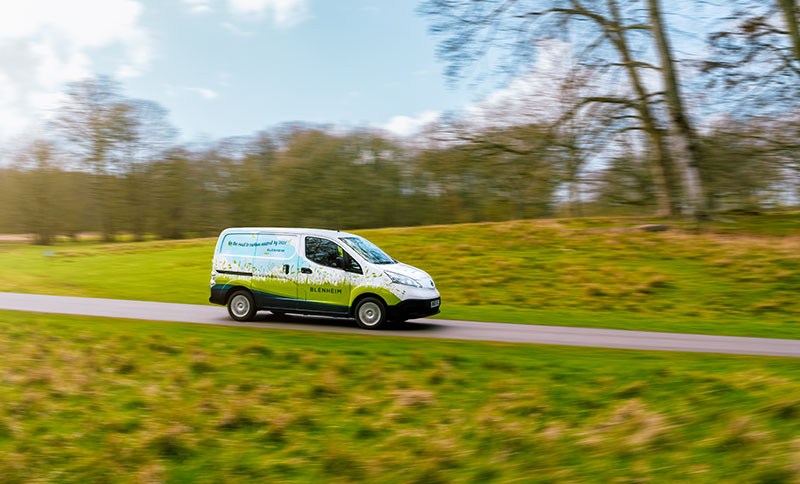
Blenheim Palace’s Journey Towards Carbon Neutrality
In a world where environmental sustainability is becoming increasingly crucial, even the most iconic landmarks and tourist attractions are joining the movement towards carbon neutrality. Earlier this year, we had the privilege of working with Blenheim Palace, an internationally renowned historic site, to support their ambitious mission of achieving carbon neutrality by 2027. Our 100% recyclable vinyl and the innovative MetaStream® process played a pivotal role in this journey.

The Client: Blenheim Palace’s Climate Change Pledge
Blenheim Palace, with its grandeur and historical significance, needs no introduction. However, beyond its architectural splendour, the palace has taken a bold stance on climate change. In 2017, they embarked on a five-year pledge to transform into a net generator of green energy. This endeavour encompassed a comprehensive approach, including the adoption of electric vehicles, LED lighting, and sustainable energy sources like biomass, solar, and hydropower. Their commitment extended beyond their own operations to include a new climate pledge – to achieve carbon neutrality across all scopes of the Greenhouse Gas (GHG) protocol by 2027 and to remove a staggering 230,000 tonnes of CO2e from the atmosphere by 2050.

The Need: Sustainable Vehicle Graphics and Circular Economy
As part of their climate-conscious strategy, Blenheim Palace sought sustainable solutions for their new electric vehicle fleet. Their requirements were multifaceted: they needed high-quality, visible vehicle graphics that aligned with their eco-friendly ethos. They were in search of a provider that not only delivered top-tier products but also embraced the circular economy model, ensuring materials were reused rather than discarded. Their vision likes ours included repurposing vehicle livery for playground equipment and other products once its lifecycle concluded.

The Solution: A Partnership with Adept Graphics
Enter us, a company specialising in innovative and eco-friendly commercial graphics. Following several collaborative meetings and an in-depth audit of Blenheim Palace’s fleet, an agreement was reached to wrap three vans, two shuttle buses, and a Goupil – an electric utility vehicle.
If you’re not sure what a Goupil is then check our Bradshaw Electric Vehicles who supplied the Goupil.
Blenheim Palace’s in-house design team conceptualised the graphics, which were then entrusted to Adept Graphics for printing, fitting, and installation. The ecological significance of this partnership lay in our commitment to recyclable liveries and graphics. Our approach ensured that once the campaign or livery reached its end, the materials could be reclaimed and repurposed into new items, contributing to a circular economy. This approach eliminated the need for landfill or incineration, aligning seamlessly with Blenheim Palace’s sustainability goals.

The Results: A Practical Shift Towards Sustainability
Beyond just a fresh look, our collaboration with Blenheim Palace brings forth tangible outcomes through practical teamwork and environmentally conscious choices. The palace’s vehicle fleet now wears more than visuals; it reflects a commitment to sustainability. We documented this transformation through images and an informative video created with Blenheim Palace’s workshop and maintenance team. These visuals highlight the blend of tradition and modernity in the fleet’s new appearance. As the vehicles move across the palace grounds, they contribute not just to the visitor experience, but also to a greener future. The use of durable, recyclable materials in the graphics echoes Blenheim Palace’s journey toward carbon neutrality, showcasing a dedication to a circular economy and a positive environmental impact. In conclusion, our work with Blenheim Palace exemplifies the success of environmentally conscious partnerships. Through 100% recyclable vinyl and the MetaStream® process, we’ve become more than just suppliers; we’re invested partners in Blenheim Palace’s journey. The road to carbon neutrality is a collective venture, and Blenheim Palace sets a commendable example for institutions globally.

